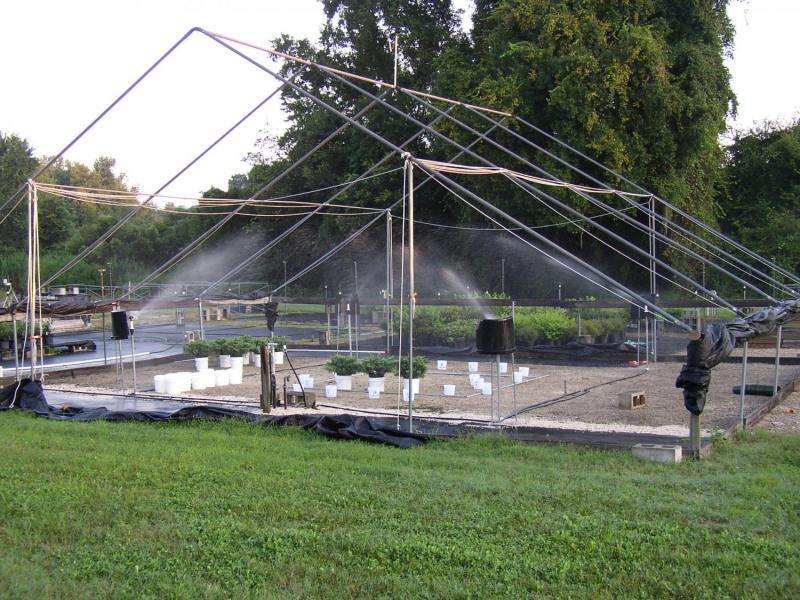How container-grown plants capture sprinkler irrigation water

As the container nursery industry faces severe restrictions on water use, researchers are looking to identify ways to minimize watering needs and eliminate excess watering. The authors of a new study say that understanding container-grown plants' capacity to "capture" sprinkler irrigation water can give growers important tools that help them adjust irrigation rates, reduce water use, and produce healthy plants.
Jeff Million and Thomas Yeager from the Department of Environmental Horticulture at the University of Florida say that there has been limited research to evaluate the ability of containerized plants to capture sprinkler irrigation water. "Irrigation capture is important because containers occupy only a fraction of the production area even when closely spaced, and there is potential for plant canopies to influence the proportion of sprinkler irrigation water that is captured relative to that which falls unintercepted between containers," they explained. "A working knowledge of capture factor (CF) is crucial for determining irrigation requirements to maximize sprinkler irrigation efficiency in container nurseries." The scientists used a formula in three unique experiments to survey irrigation capture in ornamental plants; results of their experiments appeared in the March 2015 issue of HortScience.
In the first experiment, irrigation capture was measured for 11 ornamental plant species that represented a variety of growth habits (grown in 16-cm-diameter containers and 27-cm-diameter containers). "We found plants classified as groundcover or globose to exhibit the lowest CF values, semibroad spreading, broad spreading, and spreading vine habits to exhibit moderate CF values, and upright spreading habits to have moderate to high CFs," said Million and Yeager. "In general, large-leafed species and species with greater height-to-width ratios tended to have higher CFs than plant species with smaller leaves and more spreading growth."
The second experiment analyzed the effects of plant size and container spacing using three plant species from the first experiment that exhibited different growth habits and water-capturing abilities: Juniperus chinensis 'Parsonii', Rhapheolepis indica, and Ligustrum japonicum. "Depending on the plant species, plant size, and container size, capture factor was measured at four container spacings ranging from canopies close together (0 cm) to canopies far apart (22.9 cm)," explained lead author Jeff Million. Analyses showed that CF increased as plant size of each plant species increased. Overall, CF was not limited if the spacing between containers was at least one container diameter apart.
In the third experiment, two sprinkler head types (wobbler and impact) were compared for their effect on irrigation water capture using Ligustrum japonicum plants in 16-cm- and 27-cm-diameter containers. Irrigation uniformity and application rate were measured for both sprinkler types. Wobbler sprinklers resulted in greater irrigation water capture by the plants in 27-cm containers, but not 16-cm containers. For 27-cm containers, wobbler sprinklers increased CF 7% compared with impact sprinklers. The authors said this confirmed previous studies showing that wobbler sprinklers improve irrigation capture in certain instances but the effect is not great (less than 10% increase) or consistent.
"Capture factor can play a critical role in adjusting irrigation run times to apply a required amount of water to containers," the authors said. "It follows that the plant's irrigation-capturing ability as indicated by capture factor should be included in plant grouping considerations." The authors recommended grouping plants with similar irrigation requirements as a best management practice in container nurseries.
More information: The complete study and abstract are available on the ASHS HortScience electronic journal web site: hortsci.ashspublications.org/c … nt/50/3/442.abstract
Journal information: HortScience
Provided by American Society for Horticultural Science

















